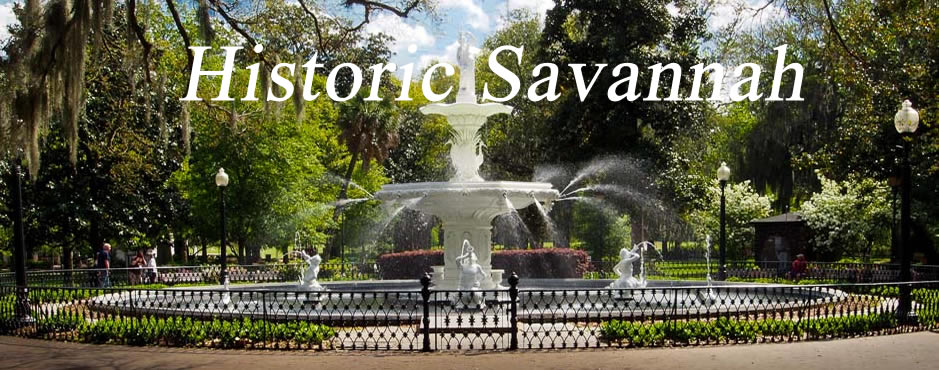History of the Savannah Squares
In 1733 four open squares were laid out in Savannah by General James Edward Oglethorpe creating America's first pre-planned city. Additional squares were added during the 18th and 19th centuries, and by 1851 there were 24 squares. In the 20th century, three of the squares were demolished or altered beyond recognition, leaving 21. In 2010, one of the three "lost" squares, Ellis, was reclaimed.
Each square measures approximately 200 feet from east to west, but the squares vary north to south from approximately 100 to 300 feet. Traffic flows one-way which is counterclockwise around the squares.
The five squares along Bull Street — Monterey, Madison Chippewa, Wright and Johnson — were intended to be grand monument spaces and have been called Savannah's "Crown Jewels" (see Day 1 on Itineraries. Many of the other squares were designed more simply as parks, although most serve as memorials as well.
Architect John Massengale has called Savannah's city plan "the most intelligent grid in America, perhaps the world", and Edmund Bacon wrote that "it remains as one of the finest diagrams for city organization and growth in existence."
Note: Savannah originally had 24 squares but Elbert Square and Liberty Square were lost in the 1930's.
Elbert Square
Elbert Square was laid out in 1801 and named for Samuel Elbert, a Revolutionary soldier, sheriff of Chatham County, and Governor of Georgia. It was located on Montgomery between Hull and Perry streets. After the Great Fire of 1820 many of the original buildings were sold in order to install water cisterns. In the 1930's it was paved over to make way for improvements to Montgomery Street and today is represented by a small grassy area across Montgomery from the west entrance to the Civic Center
Liberty Square
Liberty Square was laid out in 1799 and named in honor of the Sons of Liberty and the victory over the British in the Revolutionary War. It was located on Montgomery between State and York Streets. In the 1930s, US 17 was built through the middle of this square and Elbert Square. As a result, each square was reduced to a small strip of land. What remains of Liberty Square sits right across the street from the Chatham County Courthouse and Jail. It is the site of the " Flame of Freedom" sculpture.


